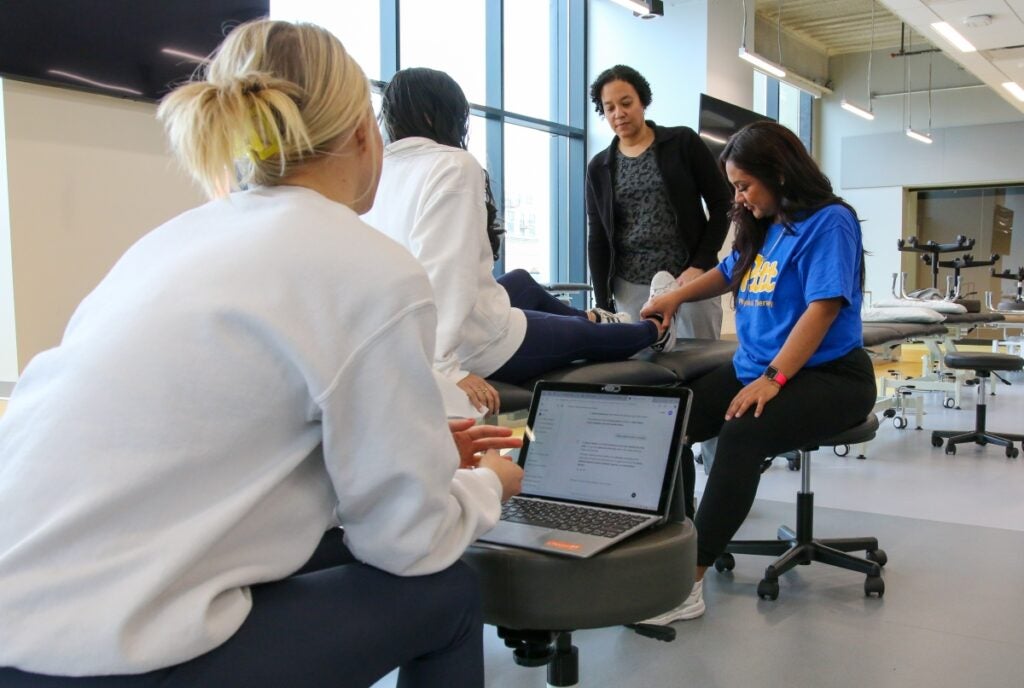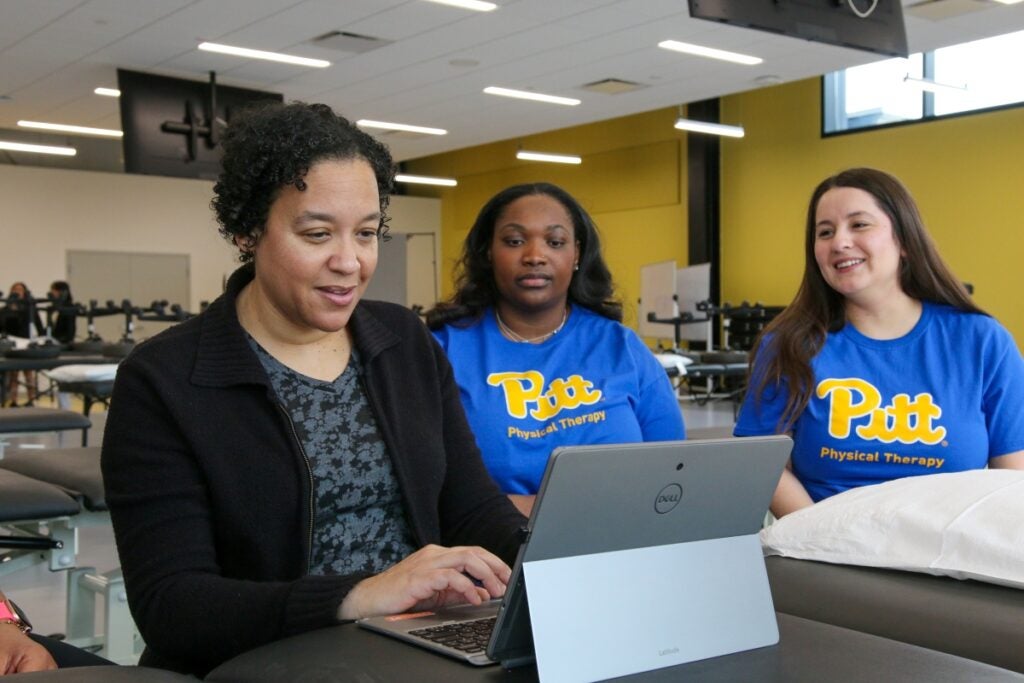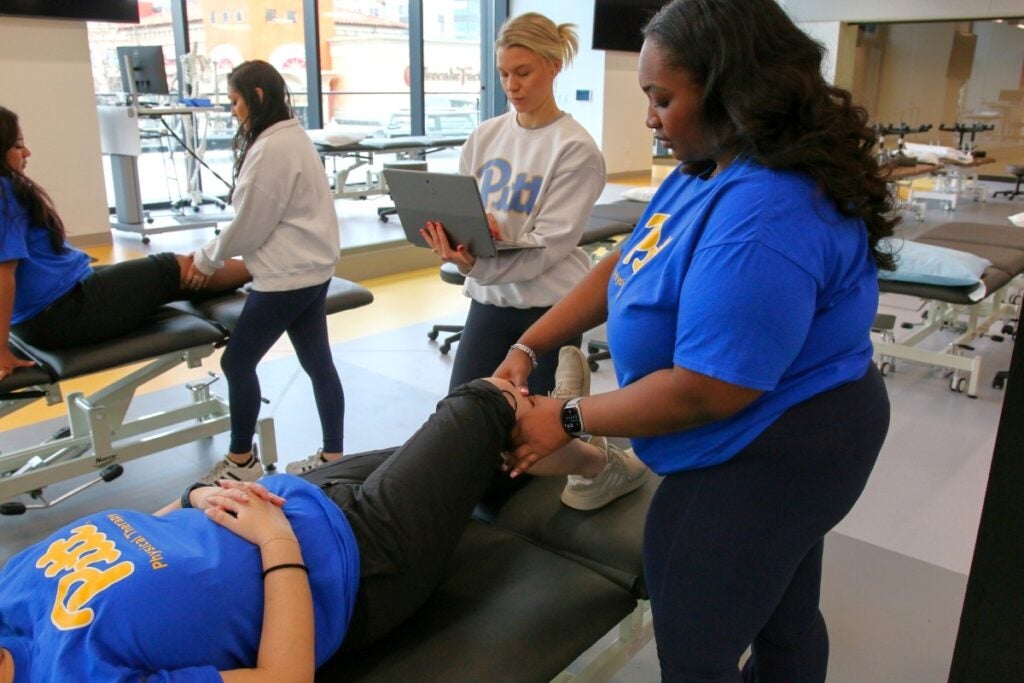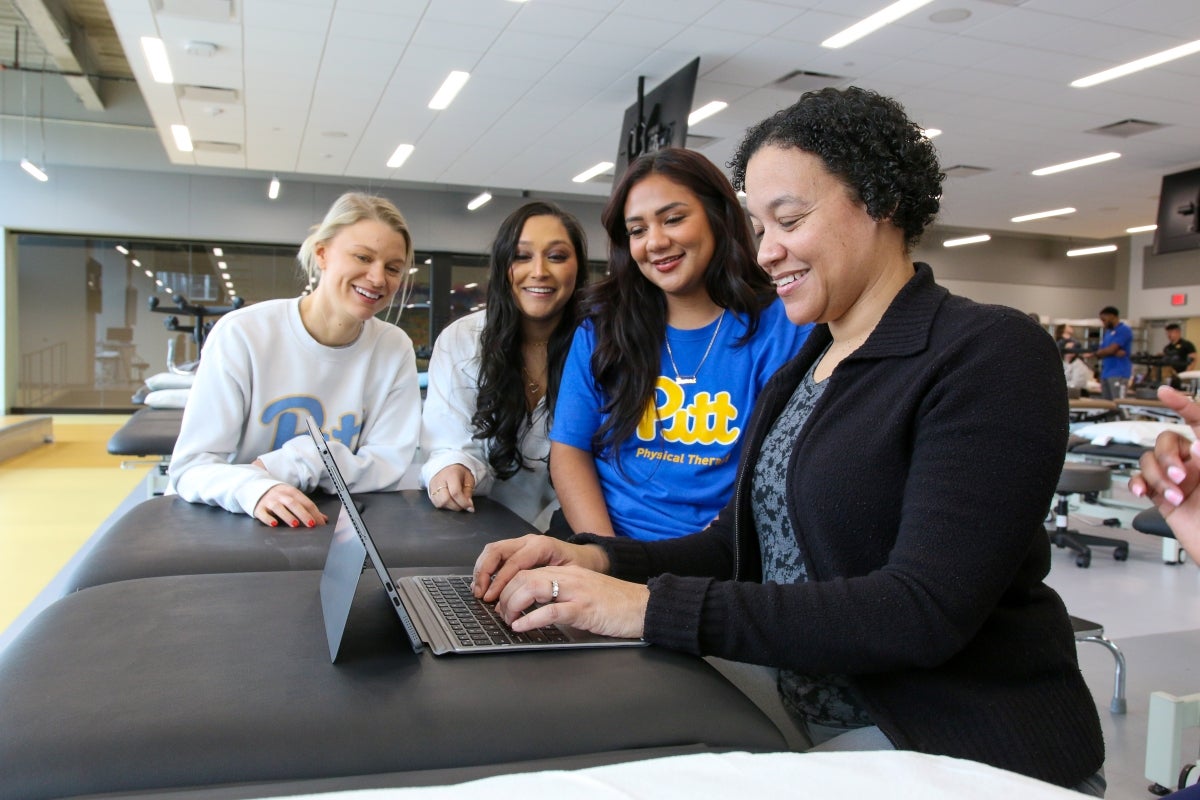In the rigorous University of Pittsburgh Doctor of Physical Therapy (DPT) program, few courses contain the volume of information found in the Human Anatomy course.
“Our anatomy course is tough for most students, but it is especially challenging for hybrid students who are learning online content prior to their first in-person immersion,” admits Assistant Professor Reivian Berrios Barillas. “Because anatomy is a foundational course, it’s critical that students really master the content to ensure their success moving forward.”
From Discussion Board to Course-Specific AI Chatbot
In the past, Berrios Barillas used a discussion board where students could post questions and she could respond within 24-48 hours. But she thought she could do this better.
Recently, she proposed a novel way to use artificial intelligence (AI) to help students improve their individual outcomes.

Thanks to a Pitt Momentum Funds Teaming Grant, she and a team of experts from the School of Computing and Information (SCI), the Dietrich School of Arts and Sciences, and the School of Education created a course-specific chatbot that has the capacity to answer student questions in real time, provide access to recent study guides and create quizzes based on their individual needs.
According to Berrios Barillas, “The chatbot was trained to only use material culled from previous iterations of the course, not information skimmed from the internet. It is based on the needs students have already demonstrated in past semesters and on the instructor-based materials that have been helpful to previous classes.”
With the help of programmers from SCI and the Pitt Department of Health Information Management (HIM), Berrios Barillas now sees reports showing exactly which students are asking questions—who needs additional help in particular areas.
To address that concern, a feedback app was developed for use after quizzes. It redirects students to specific content areas where they can relearn the information they need to know about bones, muscles, nerves and so on. HIM Assistant Professor Yanshan Wang and PittNAIL Software Developer Mariano De Leon have been instrumental in leading the technological development of the feedback application.


Increasing Student Confidence and Scores
Scott Fraundorf, associate professor in the Department of Psychology and research scientist at Pitt’s Learning Research and Development Center, contributed his expertise as a cognitive scientist who studies human learning.
“We wanted to assess student perceptions of how they are learning from the AI chatbot, specifically whether using the chatbot can increase their confidence,” says Fraundorf.
Berrios Barillas believes the answer is yes.
“For example, I’ve noticed the scores on our cadaver quizzes improve when students use the chatbot,” she says.
Other Instructional Design Elements
Peter Brusilovsky, SCI professor and director of the Intelligent Systems program, served as the technology lead for the project. He notes that the chatbot is only one of three elements of the instructional design grant. There is also a dashboard that illustrates how students in the past performed in order to identify potential topics that may be difficult for current students, and there are plans to incorporate a machine learning-based component in the near future.

“Through machine learning, we could use past data and a student’s current knowledge to predict how well that student might do in a certain course,” adds Berrios Barillas.
“We have done some good work using artificial intelligence in instructional design in the past, but Reivian’s current work shows considerable innovation,” notes Brusilovsky. “The rapid advancement of generative AI (GenAI) opens really interesting prospects that we were not able to explore earlier, so we look forward to advancing our joint work in this direction.”
GenAI—generative AI—learns patterns from existing data, such as evidence-based medicine, and uses this knowledge to generate new outputs or predictions.
Expanding Through Pitt PT and Beyond
“No one else is doing this work in our department right now,” adds Berrios Barillas. “We are excited about expanding these tools to other courses and other departments and schools within the University.”
Berrios Barillas presented a portion of their work at the 2025 American Physical Therapy Association’s national conference in Houston. It was well received and many of the conference attendees inquired about the impact of the current study on students’ academic performances. They were encouraged to hear the outcomes have been positive and were eager to learn about the next steps in the project and when the tools would be widely available.



